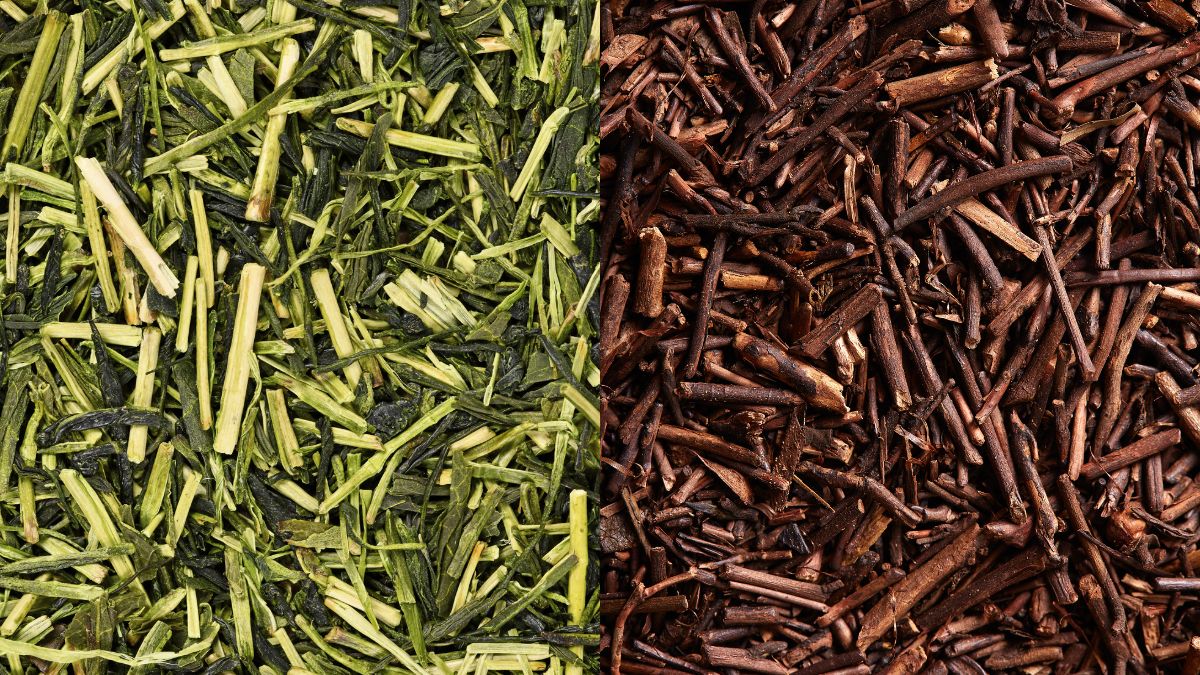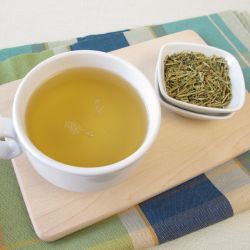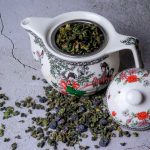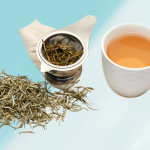
Kukicha Tea: Benefits and How to Consume This 3-Year-Old Tea
Kukicha Tea, also known as 3-year-old tea, is a traditional Japanese infusion that has been gaining popularity due to its numerous health benefits. With a mild and slightly sweet flavor, this tea is appreciated not only for its therapeutic effects but also for its rich and unique history. In this article, we will explore Kukicha tea, its benefits, properties, how to consume it correctly, and any contraindications to consider. Additionally, we will include extra information on where to purchase this special tea.
History of Kukicha Tea
Kukicha tea is a hidden gem in the world of teas, with a rich history that deserves to be explored to fully appreciate its value. This tea, also known as “twig tea” or “bōcha,” originates from Japan, specifically the Uji region, where tea farmers have, for centuries, developed techniques to make the most of the resources from their tea plant, Camellia sinensis.
In the past, tea was a luxury good reserved for the upper classes, with the tenderest and highest-quality leaves used to produce premium teas like Sencha and Gyokuro, while the stems and twigs were discarded and burned. However, farmers, often unable to afford the high-quality teas they produced due to their elevated costs, began preparing infusions with the leftover parts of the plant, namely its stems, twigs, and small branches, thus creating the now-famous Kukicha. Initially seen as a peasant’s drink, it gradually gained recognition and appreciation over generations due to its unique flavor and health benefits.
Kukicha production has evolved considerably over the years. In the past, manually separating the stems from the leaves was a labor-intensive process. Today, this process is mechanized, allowing for large-scale production. Machines use weight and size to separate different components, ensuring a uniform mixture of stems and twigs characteristic of Kukicha.
Despite traditionally being seen as a second-tier tea due to using the leftover parts of the plant, Kukicha has gained popularity not only in Japan but also among tea enthusiasts worldwide. Its low caffeine content, combined with a flavor profile that ranges from mild vegetal notes to hints of nuts or fresh grass, makes it an ideal choice for those seeking a comforting and healthy drink at any time of the day.
Kukicha in Macrobiotics and Japanese Culture
Kukicha tea is not just a drink; it’s also an integral part of macrobiotic philosophy, which promotes harmony between body, mind, and environment. In Japanese culture, tea is a form of meditation and a way to strengthen social connections. This cultural tradition highlights the benefits of Kukicha tea as part of a balanced lifestyle.
In macrobiotics, Kukicha tea is valued for its alkalizing and detoxifying properties, helping maintain the body’s pH balance and promoting healthy digestion. Made from the stems and twigs of the tea plant, this tea contains lower caffeine levels compared to other green teas, making it an ideal choice for daily consumption, even at night. Additionally, Kukicha is rich in antioxidants and essential minerals such as calcium, potassium, and zinc, contributing to overall health and well-being.
The consumption of Kukicha tea in macrobiotics is also associated with the practice of mindfulness and connecting with the present moment. Drinking Kukicha tea mindfully can be a meditative practice that calms the mind and reduces stress, promoting a sense of inner peace. This approach aligns with the macrobiotic principles of simple, balanced living, where each action is carried out with attention and intention.
Differences Between Green Kukicha Tea and Roasted Kukicha Tea
Green Kukicha
 Green Kukicha is a specialty tea rooted in the Japanese tradition of fully utilizing the tea plant, Camellia sinensis. This tea is made using the stems, branches, and thicker leaves of the plant, instead of the young leaves and buds typically used in teas like Sencha and Gyokuro. This practice of using the entire plant reflects a traditional approach to sustainability and full utilization of available resources.
Green Kukicha is a specialty tea rooted in the Japanese tradition of fully utilizing the tea plant, Camellia sinensis. This tea is made using the stems, branches, and thicker leaves of the plant, instead of the young leaves and buds typically used in teas like Sencha and Gyokuro. This practice of using the entire plant reflects a traditional approach to sustainability and full utilization of available resources.
Historically, Green Kukicha was consumed by the working classes in Japan, as it was considered a lower-quality tea compared to those made exclusively from leaves. However, over the years, the mild, slightly sweet flavor and unique properties of Green Kukicha have gained popularity among a wider audience. Today, it is enjoyed both in Japan and internationally for its lightness, low caffeine content, and refreshing flavor profile.
Roasted Kukicha (3-Year-Old Tea)
 Roasted Kukicha, also known as “3-year-old tea” or San-nen Bancha, offers a distinct variation of traditional Kukicha. This version is made from the stems and branches of tea plants that are at least three years old. After harvesting, these components are dried and then roasted, a process that results in a more robust and earthy flavor.
Roasted Kukicha, also known as “3-year-old tea” or San-nen Bancha, offers a distinct variation of traditional Kukicha. This version is made from the stems and branches of tea plants that are at least three years old. After harvesting, these components are dried and then roasted, a process that results in a more robust and earthy flavor.
The practice of aging the branches for three years before harvesting is linked to macrobiotic philosophy, which values foods that provide balance and harmony to the body. Roasted Kukicha, with its deep flavor and calming properties, has become a fundamental element in the macrobiotic diet, recommended for its digestive qualities and relaxing effect. Roasting also further reduces the caffeine content, making this tea an ideal option for nighttime consumption or for those seeking an alternative to traditional green tea.
Both varieties of Kukicha – Green and Roasted – represent the Japanese culture’s commitment to simplicity, sustainability, and health. Green Kukicha is appreciated for its light and refreshing flavor, while Roasted Kukicha offers a richer, more robust tea experience. Each of these versions carries a story of tradition and adaptation, reflecting the ongoing evolution of the art of tea in Japan. Today, both are celebrated not only for their unique flavors but also for the well-being benefits they bring.
Kukicha Tea Benefits: What Is Kukicha Tea Good For?
Kukicha tea is valued for its multiple applications in promoting health and well-being. But what exactly is Kukicha tea good for? Let’s explore its main uses and benefits:
1. Rich in Antioxidants
Like many green teas, Kukicha is rich in antioxidants that help combat free radicals in the body, reducing the risk of chronic diseases and promoting cellular health. This property is one of the many benefits of Kukicha tea that makes it a healthy choice.
2. Low in Caffeine
One of the most notable features of Kukicha tea is its low caffeine content, making it an ideal option for consumption throughout the day without the risk of causing insomnia or nervousness. This tea, also known as “twig tea,” distinguishes itself from other green teas precisely because of this characteristic.
The reason behind its low caffeine content lies in the composition of Kukicha: while traditional teas use the leaves of the Camellia sinensis plant, Kukicha is primarily made from the stems, branches, and small twigs. These stems contain only about a third of the caffeine found in the leaves, resulting in a tea with significantly lower caffeine content.
For those wondering if Kukicha tea contains theine (caffeine), the answer is yes, but in minimal amounts. In fact, Kukicha has between 0.5% and 1% of the caffeine found in common green tea. The amount is so low that it can be enjoyed at any time of the day without interfering with sleep or causing anxiety.
Additionally, the Kukicha production process also contributes to its low caffeine content. The branches used in the tea are matured on the plant for three years and then roasted four times separately. This process not only enriches the flavor of the tea but also further reduces its caffeine content, making Kukicha one of the most unique and mild options among Japanese teas.
3. Aids Digestion
A study published in PubMed indicates that ellagitannin, present in large quantities in Kukicha, can promote gut health and facilitate digestion. Drinking a cup of this tea after meals can help improve digestion and relieve stomach discomfort, making this another one of the benefits of Kukicha tea.
4. Promotes Bone Health
Considered a good source of calcium, a cup of Kukicha tea can contain up to 13 times more calcium than a glass of milk, contributing to bone health. Incorporating Kukicha tea into your diet may be beneficial for preventing conditions like osteoporosis.
Furthermore, Kukicha tea is rich in essential minerals such as copper, selenium, manganese, calcium, zinc, and others, as well as vitamins A, C, and B complex, due to its prolonged three-year cultivation, during which it continuously absorbs minerals from the soil.
5. Aids in Weight Loss
Another interesting aspect is the ability of “3-year-old tea” to assist in weight loss processes, as its diuretic effect and metabolism-boosting properties can help with weight loss when associated with a balanced diet and physical exercise.
How to Consume 3-Year-Old Tea?
How can you consume 3-year-old tea correctly to reap all its benefits? Preparing Kukicha tea is simple and can be done by following a few basic steps:
- Boil the Water: Heat the water to around 80°C to prevent the tea from becoming bitter.
- Add the Tea: Use about one teaspoon of Kukicha for every 200 ml of water.
- Infusion: Let the tea steep for 3 to 5 minutes. Avoid leaving it longer to preserve its delicate flavor.
- Serve and Enjoy: Strain the tea and serve. It can be consumed hot or cold, according to preference.
When incorporating 3-year-old tea into your routine, it’s important to pay attention to the quantities and times of consumption to maximize its positive effects.
3-Year-Old Tea: Contraindications
Despite the numerous benefits of Kukicha tea, 3-year-old tea may not be suitable for everyone. It’s important to consider some contraindications:
- Pregnancy and Breastfeeding: Pregnant or breastfeeding women are advised to consult their doctor before consuming any type of tea. Although no side effects are generally known, this decision should be made with professional guidance.
- Anemia: People with anemia should moderate their consumption, as this tea may interfere with iron absorption.
Considering some minor contraindications is crucial to ensure its consumption is beneficial.
Kukicha Tea: Where to Buy
If you’re looking for a reliable source to purchase authentic Japanese green Kukicha tea, our store, “Chás do Mundo,” is the ideal choice. We offer an exclusive selection of Kukicha and other varieties of Japanese green teas, all of high quality and carefully selected to ensure the best possible experience.
Additionally, at Chás do Mundo, we are committed to providing the best online shopping experience. We offer fast deliveries to over 80 countries, ensuring your tea always arrives fresh and on time. The trust of our customers is reflected in our Google reviews, where we have a high rate of positive feedback, demonstrating satisfaction and confidence in the quality of our products and services.
Visit our website to explore our range of Kukicha teas and discover other Japanese green tea options that can complement your collection. We are here to ensure that your journey through the world of teas is as rich and enjoyable as the infusions we offer.
Frequently Asked Questions About Kukicha Tea
Does Kukicha tea contain caffeine?
Yes, but in much smaller amounts compared to other green teas, making it suitable for consumption throughout the day.
What are the benefits of Kukicha tea for weight loss?
It helps boost metabolism and has a diuretic effect, which can aid in weight loss when combined with a healthy diet.
How is Kukicha tea different from other teas?
Kukicha is made from the twigs and stems of the tea plant, while most green teas are made from leaves. This gives Kukicha its unique flavor and low caffeine content.
Where can I buy high-quality Kukicha tea?
Natural product stores and online platforms like Chás do Mundo are good options for purchasing high-quality Kukicha tea.
Kukicha tea, with its rich history and proven benefits, is an excellent addition to the diet of those looking to improve health and well-being. With its unique flavor and nutritional properties, this tea is more than just a beverage – it’s a cultural and health experience. When considering Kukicha tea benefits, it’s essential to remember the contraindications and consume it in moderation. Try incorporating this tea into your routine and enjoy its positive effects.








Sorry, the comment form is closed at this time.